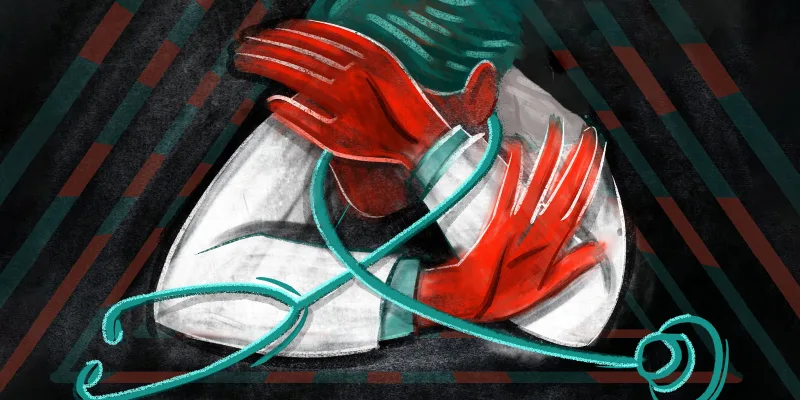 Many health care workers are left bewildered by the fact that nationwide, we don’t have the technology we need to take care of patients and ourselves during the COVID-19 outbreak. Some have compared it to going to war without helmets. Several have written impassioned letters begging large companies to use their abundant skills and resources to address the problem and to do so quickly.
Many health care workers are left bewildered by the fact that nationwide, we don’t have the technology we need to take care of patients and ourselves during the COVID-19 outbreak. Some have compared it to going to war without helmets. Several have written impassioned letters begging large companies to use their abundant skills and resources to address the problem and to do so quickly.
The conflict between industry and health care didn't start in 2020. I’m familiar with the differences in culture between the two work environments. My husband worked in tech for a large startup and more recently a venture capital firm. His thoughtful method for assessing companies, problems, and logistics is very effective in his world. In mine, it’s a bit infuriating. The difference in our ways to solve problems even made it into our wedding vows. I would be the “let’s get it done” to his “let’s start from the beginning.” On the other hand, his ability to launch and pursue risky ideas and companies isn’t as limited in his world as it is in mine where health care regulations abound.
So the first time I heard that there was a shortage of PPE in some of our nation’s most affected hospitals, I jumped to a conclusion: the tech industry is unable to break in to health care quickly and is therefore letting us down. I don’t think I was alone in this assessment based on what I read from so many other health care providers.
I brought this topic home to the dinner table, fully prepared to win over my partner and turn all available factories into mask suppliers and ventilator-makers.
This is an open statement admitting that I may have been a little wrong (luckily my husband doesn’t read Doximity).
It turns out that industry is doing a lot and as quickly as possible. I just wasn’t hearing about it — maybe because it’s been delayed, or maybe because it’s hidden behind other news, or maybe because I didn’t recognize it.
As we continued the conversation, I learned more about the tremendous efforts from industry that are going into trying to quickly scale production of needed supplies and create innovative solutions.
I also found out about the roadblocks they have faced. A steep drop in exports from China, where much of the health care equipment originates (including half the world’s face masks!), slowed typical supply chains at a time when we needed them to speed up. We’ve all heard about the FDA regulatory requirements that lifted slowly by the federal government, delayed the production of COVID tests and other resources (Ranney et al 2020).
Policy makers have pushed efforts forward to give companies the ability to quickly scale production of needed products and come up with cures and solutions as soon as possible. One example is Senator Cory Booker recently stating to the trade group representing medical technology manufacturers, “We must work rapidly to increase our nation’s supply of PPE and other necessary equipment, and many of AdvaMed’s member companies are critical to this effort.
Many companies have quickly answered the call to action. Here’s some examples (references below):
- Medtronic has increased its production of ventilators by 40% and is on track to more than double its capacity to manufacture and supply ventilators.
- Over the past two months, 3M has doubled global production of N95 masks to about 100 million a month.
- A California-based molecular diagnostic company, Cepheid, created an FDA-approved rapid (45 minutes) COVID19 diagnostic test. This test can be run around the clock and from centers across the country.
- Several groups around the world have created 3D-printable face shields and masks.
- A group of entrepreneurs in health care, technology, and logistics launched “Operation Masks”, a non-profit geared at technology and logistics to fight COVID19.
- A new Sydney-based non-profit, RapidWard, launched this week to help get critical supplies from producers in China to health care providers and governments around the world who need them.
- NYC has created technology SWAT teams to address urgent coronavirus response activities.
- Pharmaceutical companies and startups are allying to create vaccines and therapeutics in unprecedented ways.
- Even the MLB has made its way into the mask-making industry!
Many companies and individuals are stepping up to quickly help the urgent challenges being presented by COVID-19. The unfortunate part is that this news isn’t always reaching the front-lines and, more than the news itself, the actual supplies aren’t there yet either.
Some of the biggest questions that lie ahead are: How do we get the resources to everyone in need? How do we decide which resources we need the most? How do we organize the efforts of everyone trying to help?
I would urge providers to share what they need and look out for local innovations that could become game changers. For example, yesterday a nurse on rounds made a suggestion about using telehealth to bring patient families virtually into ICU rooms where visitation has been restricted. This is something that, with the correct technology, could virtually reunite families, patients, and their care teams.
We, as providers, need both companies and governments to speak up and be transparent about their plans to distribute supplies. Share progress on PPE instead of just numbers of deaths and new cases. Lead with development updates instead of fearful counts.
At times like this, it’s often hard to see the light at the end of the tunnel, especially for us health care providers on the front lines. However, when I looked for it, I found hope and ingenuity all around me. While it certainly doesn’t solve all the problems we’ll face, it’s nice to know we’re not alone.
Theresa Williamson, MD is a neurosurgical resident at Duke University Hospital and researcher at the Duke Margolis Health Policy Center. She focuses on decision-making and physician-patient communication in neurosurgery. Recognizing that neurosurgery is a complex and stressful field, she aims to advocate for both patients and physicians in her writing. For more, follow her on twitter @twilli7 or at medium.com. She is a previous Doximity Fellow.
Click here to see more perspectives on COVID-19 from the Doximity network.
Click here for up-to-date news about COVID-19 on Doximity.
Illustration Collage by Jennifer Bogartz / Getty Images







